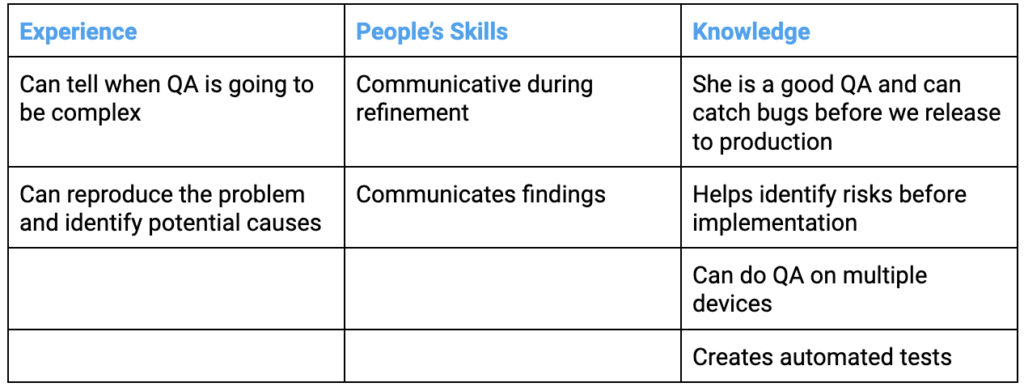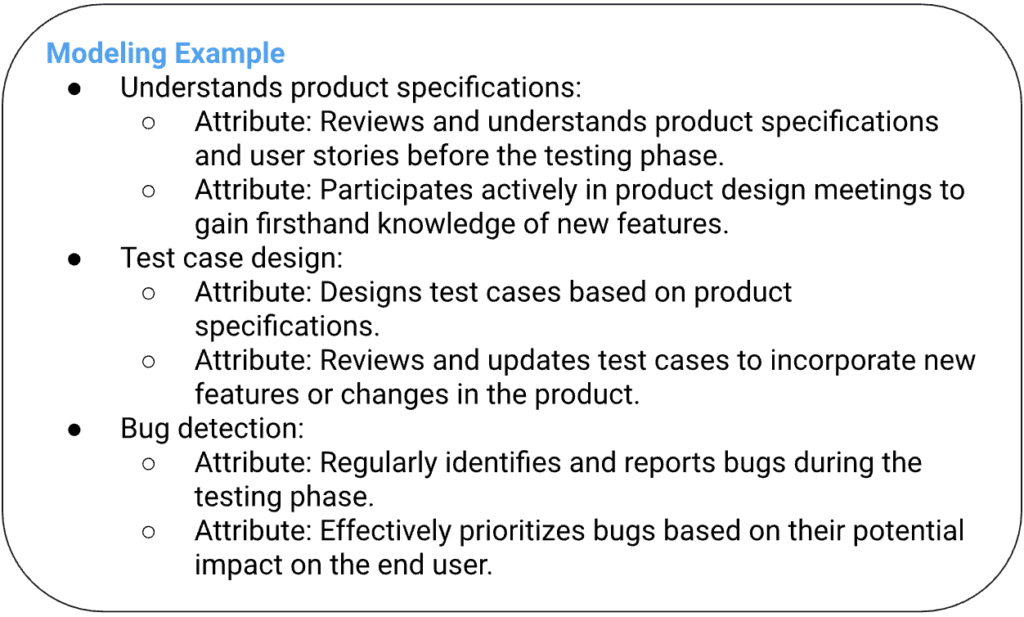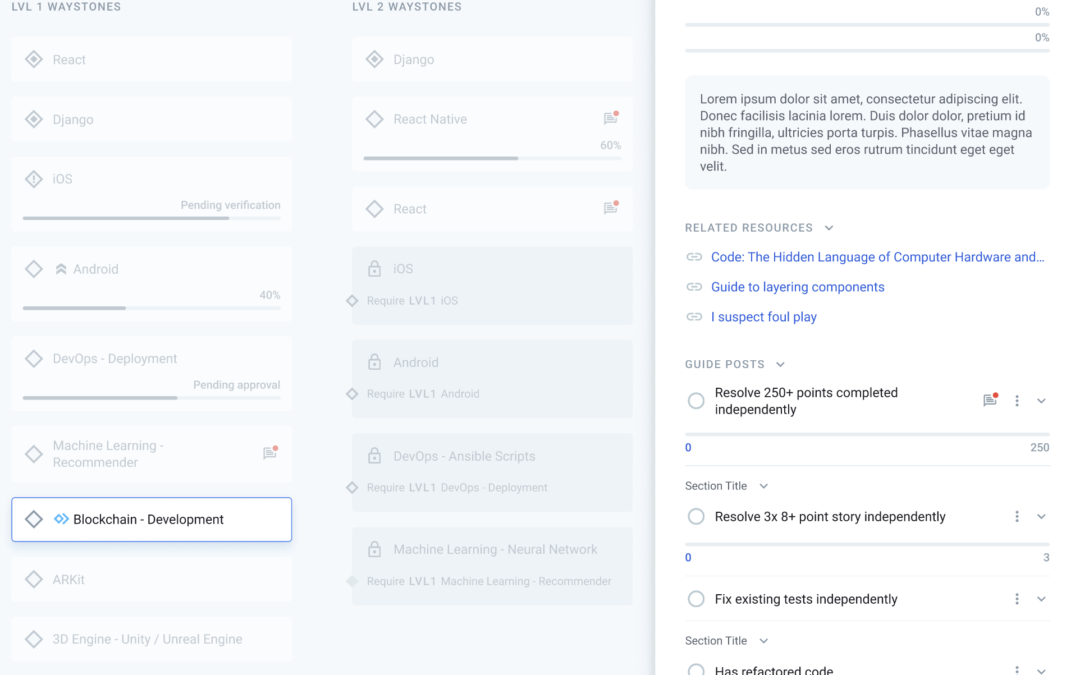This is a continuation of our “Get Started with Journeys for Your Teams” blog post series where we described how to get started with Agile Growth™ and take the first step into defining the first Journey for your team.
Building upon the insights gained from the previous steps, Inspiration, and Grouping by Similarity, this step focuses on transforming the groupings you’ve defined in the previous step and turning them into specific skills or knowledge – which we’ll refer to as ‘objects’ – that need to be obtained. By defining specific skills and knowledge as objects we will turn vague descriptors into clear, actionable goals.
Transforming Descriptions Into Objects
Take the categories you created for the ideal person in the role and begin transforming them into objects. These objects represent specific skills or knowledge that the person needs to acquire. In analogy to a sports player, we want to ensure the person understands the rules of the game (knowledge) and possesses the skills to perform on the field.
For instance, if your category was ‘Communication Skills,’ objects could be ‘public speaking,’ ’email etiquette,’ ‘active listening,’ and so on. These objects provide tangible targets for your team to aim for, creating a more engaging and effective growth strategy.
Defining Attributes for Each Object
For each object, define the attributes that demonstrate accomplishment or proficiency in that particular skill or knowledge area. Attributes represent the specific actions or tasks that the person must undertake to showcase their mastery. These attributes can include completing relevant courses, performing specific tasks, or demonstrating proficiency in specific tools or techniques.
Think about what someone needs to do to prove they’ve successfully acquired a particular skill or knowledge. If ‘public speaking’ is an object, an attribute might be ‘deliver a presentation to the team.’
Refining the Ideal Role Description
Through the modeling exercise, your initial description of the ideal role will expand and become more tangible and achievable. The attributes provide a clear set of goals and milestones for the individual in the role. By incorporating specific tasks and actions, the description becomes a roadmap for professional growth and development.
Ensure a healthy mix of both skills and knowledge in your attributes to create a well-rounded Journey.
Through this series of blog posts, we will continue working on defining a Journey for our QA role. Below you can see the progress we made on Step 3, transforming one of the skills or statements into a set of objects and attributes.
Step 2 Example


By transforming the ideal role description into tangible attributes, you have created a set of achievable goals for professional growth. The attributes provide clear actions and tasks that individuals can work towards, fostering continuous improvement and skill development. In the next blog post, we will explore Step 4: Make It a Measurable, where we will discuss methods to make milestones achievable by defining specific and measurable goals. Stay tuned!
